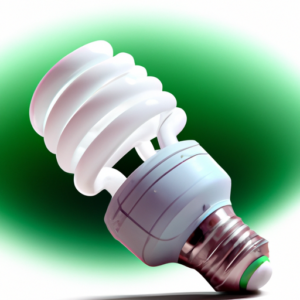Imagine if you could harness the power of flowing water to generate clean, renewable energy. Well, with hydroelectric power, you can! In this article, we’ll be exploring the various advantages and disadvantages of this fascinating energy source. From its ability to produce electricity without polluting the environment to its potential impact on ecosystems, we’ll cover it all. So, dive in and discover the pros and cons of hydroelectric power!
Check Out Our Top Eco Friendly Product Picks On Amazon Here
Advantages of Hydroelectric Power
Renewable and Sustainable Energy Source
One of the most significant advantages of hydroelectric power is that it is a renewable and sustainable energy source. Unlike fossil fuels such as coal, oil, and natural gas, which are finite resources and will eventually run out, water is an abundant resource that can be continuously replenished through the water cycle. By harnessing the power of flowing or falling water, hydroelectric power stations can generate electricity without depleting this valuable resource. This not only ensures a constant and reliable energy supply but also helps in reducing our dependence on non-renewable energy sources and mitigating the impacts of climate change.
Minimal Greenhouse Gas Emissions
Another major advantage of hydroelectric power is its minimal greenhouse gas emissions. Unlike traditional power plants that burn fossil fuels and release large amounts of carbon dioxide and other greenhouse gases into the atmosphere, hydroelectric power plants generate electricity without combustion. The process of generating hydroelectric power involves the conversion of kinetic energy from flowing or falling water into electrical energy through turbines. This means that hydroelectric power is a clean and green energy source, as it does not contribute to the greenhouse effect or the global warming phenomenon. By relying more on hydroelectric power, we can significantly reduce our carbon footprint and combat climate change.
Reliable and Predictable Power Generation
Hydroelectric power offers reliable and predictable power generation, making it a preferred choice for meeting the electricity demands of communities and industries. Unlike solar or wind power, which are intermittent energy sources depending on weather conditions, hydroelectric power stations can operate consistently and provide a stable electricity supply. As long as there is a steady flow of water in rivers or reservoirs, hydroelectric power plants can generate electricity without interruptions, ensuring a reliable energy source for homes, businesses, and essential services. The predictability of hydroelectric power generation also allows for better planning and management of energy resources, making it easier to meet the electricity demands of growing populations.
Flexibility in Power Generation
Hydroelectric power offers flexibility in power generation, allowing for adjustments in electricity output based on demand. By controlling the flow of water through turbines, hydroelectric power plants can regulate the amount of electricity produced. This flexibility is particularly valuable in managing peak electricity demands during certain times of the day or year. For example, during periods of high energy use, such as hot summer days when air conditioners are running at full capacity, hydroelectric power plants can increase their output to meet the increased demand. This ability to respond quickly to changes in electricity needs makes hydroelectric power an adaptable and efficient energy source.
Water Management and Flood Control
Besides generating electricity, hydroelectric power plants also play a crucial role in water management and flood control. By constructing reservoirs, dams, and canals, these power stations can store water during times of excess flow and release it during dry periods or when electricity demand is high. This allows for effective water resource management, ensuring a constant supply for domestic, agricultural, and industrial purposes. Additionally, the storage capacity of reservoirs can help prevent flooding by regulating the flow of water, acting as a buffer during heavy rainfall or snowmelt. This dual functionality of hydroelectric power plants positively impacts water resource management and aids in minimizing the risk of floods, especially in areas prone to extreme weather events.
Diversification of Energy Sources
Hydroelectric power contributes to the diversification of energy sources, reducing reliance on a single primary source for electricity generation. By adopting a diversified energy mix, communities and countries can enhance energy security by reducing the vulnerability associated with dependence on fossil fuels or a single renewable energy source. Hydroelectric power, with its large-scale and consistent electricity generation capacity, can be a valuable addition to the overall energy portfolio. Integrating hydroelectric power with other renewable and non-renewable energy sources creates a more resilient and balanced energy system and helps in meeting both short-term and long-term energy needs.

Check Out Our Top Eco Friendly Product Picks On Amazon Here
Disadvantages of Hydroelectric Power
Environmental Impact and Habitat Disruption
One of the main disadvantages of hydroelectric power is its environmental impact and the potential disruption to natural habitats. Constructing dams and reservoirs for hydroelectric power plants often entails flooding large areas of land, which can result in the destruction of ecosystems and displacement of wildlife. The submergence of forests, wetlands, and fertile agricultural land can lead to the loss of biodiversity and crucial habitats for various plant and animal species. Additionally, altering natural river flow patterns can impact the downstream ecosystems, affecting the water quality, sediment transport, and fish populations. It is essential to carefully consider these environmental consequences and mitigate them through responsible planning, habitat restoration, and environmental mitigation measures.
Limited Suitable Locations
Hydroelectric power generation is limited to areas with appropriate geographical conditions, such as rivers with a significant flow or locations with substantial elevation differences for effective water storage and movement. While many regions have access to rivers and water bodies, not all of them have the necessary topography or flow rates to support large-scale hydroelectric power projects. This limitation restricts the widespread adoption of hydroelectric power and necessitates a thorough study of potential sites to determine their suitability. However, advancements in technology, such as small-scale hydropower systems and run-of-river plants, are expanding the range of viable locations for hydroelectric power generation.
High Initial Costs
Hydroelectric power plants require significant upfront investments for the construction of dams, reservoirs, turbines, and transmission infrastructure. The high initial costs associated with building hydroelectric power projects can be a barrier to their widespread implementation, particularly in developing nations or regions with limited financial resources. Moreover, the complexity of these projects, including engineering requirements, environmental impact assessments, and land acquisition, can further contribute to the overall expenses. However, it is essential to consider the long-term economic benefits and cost savings that hydroelectric power can offer through its consistent energy generation and minimal fuel costs.
Potential for Drought Vulnerability
While hydroelectric power relies on water as a source of energy, its dependence on consistent water flow can leave it vulnerable to drought conditions. In times of prolonged drought or reduced water availability, hydroelectric power plants may experience lower electricity generation, impacting the reliability of the energy supply. This highlights the need for diversified energy sources to mitigate the risks associated with climate variability and to ensure a consistent power supply. Additionally, advancements in technologies such as pumped-storage hydropower and increased storage capacity in reservoirs can help in managing water resources during drought periods by storing water for later use.
Relocation of Communities and Cultural Heritage Sites
Constructing large-scale hydroelectric power projects often involves the relocation of communities residing in the areas to be flooded or significantly altered. This can result in the displacement of people from their homes and the disruption of their way of life. Additionally, the construction of dams and reservoirs for hydroelectric power plants may lead to the submergence or destruction of cultural heritage sites, including historical structures or areas of archaeological significance. These social and cultural impacts need to be considered and addressed through comprehensive planning, proper consultation with affected communities, and the implementation of appropriate mitigation measures such as compensation, resettlement, or preservation of cultural heritage.
Interference with Fish Migration
Water bodies and rivers serve as critical migration routes for many fish species that move upstream to spawn or downstream for feeding and growth. The construction of dams and barriers for hydroelectric power plants can disrupt these natural migrations, hindering fish populations and damaging aquatic ecosystems. Fish passage systems, such as fish ladders or fish lifts, can be implemented to help fish overcome these barriers, but they may not always be fully effective. The interference with fish migration can have significant ecological consequences, affecting the overall health and biodiversity of freshwater systems. Therefore, it is crucial to consider the implementation of fish-friendly designs and technologies to minimize the impact on fish migration while harnessing the power of water for electricity generation.
In conclusion, hydroelectric power offers numerous advantages as a renewable and sustainable energy source, including its minimal greenhouse gas emissions, reliable and predictable power generation, flexibility, water management capabilities, and the diversification of energy sources. However, it is essential to address the associated disadvantages, such as its environmental impact, limited suitable locations, high initial costs, potential drought vulnerability, relocation of communities and cultural heritage sites, and interference with fish migration. Through responsible planning, effective mitigation measures, and ongoing technological advancements, the advantages of hydroelectric power can be maximized while minimizing its drawbacks, making it a valuable component of the global energy transition towards a more sustainable future.




